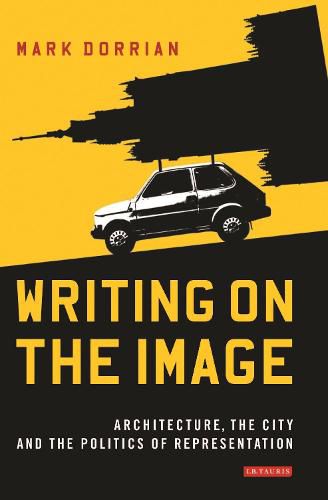Readings Newsletter
Become a Readings Member to make your shopping experience even easier.
Sign in or sign up for free!
You’re not far away from qualifying for FREE standard shipping within Australia
You’ve qualified for FREE standard shipping within Australia
The cart is loading…






Ranging from an examination of the politically-laden spectacle of George IV’s visit to Edinburgh in 1822, as stage-managed by the celebrated novelist Sir Walter Scott, to an analysis of Google Earth’s role in the construction of a new kind of political map, one no longer structured by boundary lines and coloured territories but instead through a politics of image resolution, the remarkable essays in this book present innovative ways of understanding visual phenomena in historical and contemporary culture.
Writing on the Image brings together a series of Mark Dorrian’s celebrated critical writings. Focusing on issues of elevated vision, spectacle, atmosphere, and the limits of aesthetic experience, Dorrian explores the politics of representation through a series of close readings of the ideological effects of images in their specific contexts. Seamlessly traversing sources from architecture, art, literature, history, geography and film, the essays gathered here exemplify Mark Dorrian’s pioneering ‘post-disciplinary’ approach to architecture and visual culture.
Featuring a foreword by Paul Carter, and an afterword by Ella Chmielewska, Writing on the Image opens with a sequence of four historically-oriented chapters that then lead on to considerations of key events in architectural, urban and visual culture over the past decade. Whether it be an eighteenth-century engraving that depicts a magnified drop of tap water as an alien planet swarming with monstrous creatures, an artwork showing a car with the silhouette of a building mounted on its roof, the covering up of a tapestry in the UN before a televised news conference, or a large-scale satellite image that is affixed to the basement floor of a public building, Dorrian shows how each artefact or event he examines is eloquent in its ability to problematise a larger set of relations beyond itself.
$9.00 standard shipping within Australia
FREE standard shipping within Australia for orders over $100.00
Express & International shipping calculated at checkout
Ranging from an examination of the politically-laden spectacle of George IV’s visit to Edinburgh in 1822, as stage-managed by the celebrated novelist Sir Walter Scott, to an analysis of Google Earth’s role in the construction of a new kind of political map, one no longer structured by boundary lines and coloured territories but instead through a politics of image resolution, the remarkable essays in this book present innovative ways of understanding visual phenomena in historical and contemporary culture.
Writing on the Image brings together a series of Mark Dorrian’s celebrated critical writings. Focusing on issues of elevated vision, spectacle, atmosphere, and the limits of aesthetic experience, Dorrian explores the politics of representation through a series of close readings of the ideological effects of images in their specific contexts. Seamlessly traversing sources from architecture, art, literature, history, geography and film, the essays gathered here exemplify Mark Dorrian’s pioneering ‘post-disciplinary’ approach to architecture and visual culture.
Featuring a foreword by Paul Carter, and an afterword by Ella Chmielewska, Writing on the Image opens with a sequence of four historically-oriented chapters that then lead on to considerations of key events in architectural, urban and visual culture over the past decade. Whether it be an eighteenth-century engraving that depicts a magnified drop of tap water as an alien planet swarming with monstrous creatures, an artwork showing a car with the silhouette of a building mounted on its roof, the covering up of a tapestry in the UN before a televised news conference, or a large-scale satellite image that is affixed to the basement floor of a public building, Dorrian shows how each artefact or event he examines is eloquent in its ability to problematise a larger set of relations beyond itself.